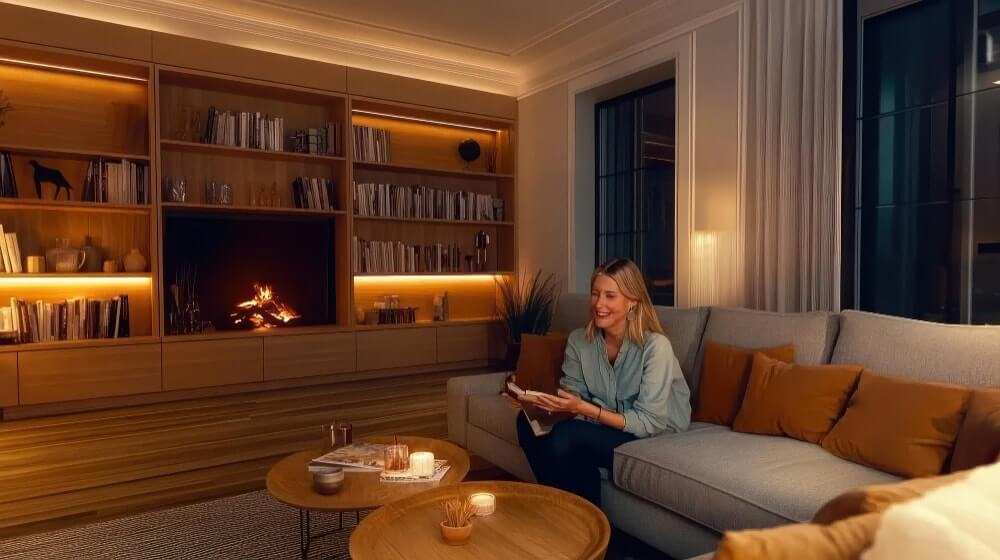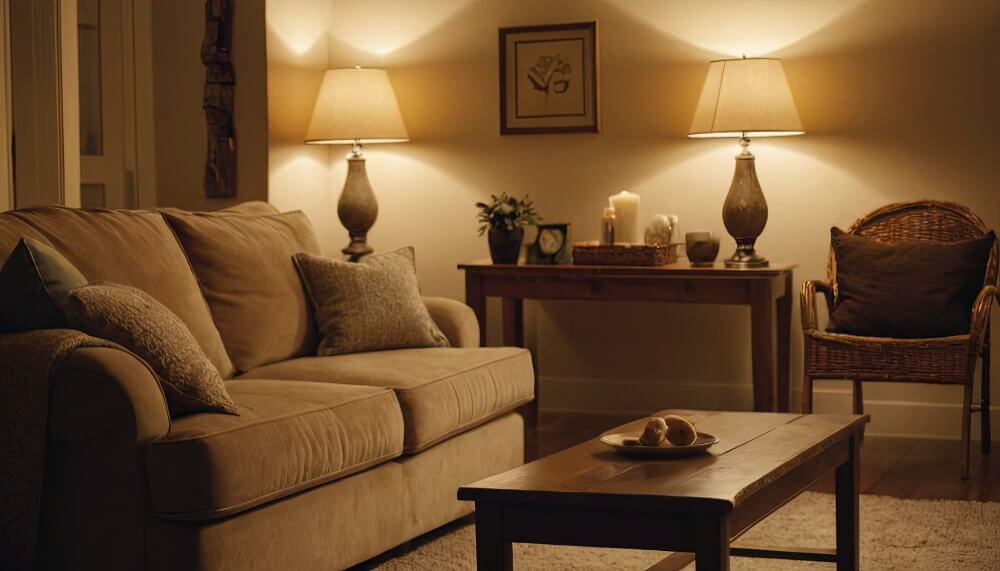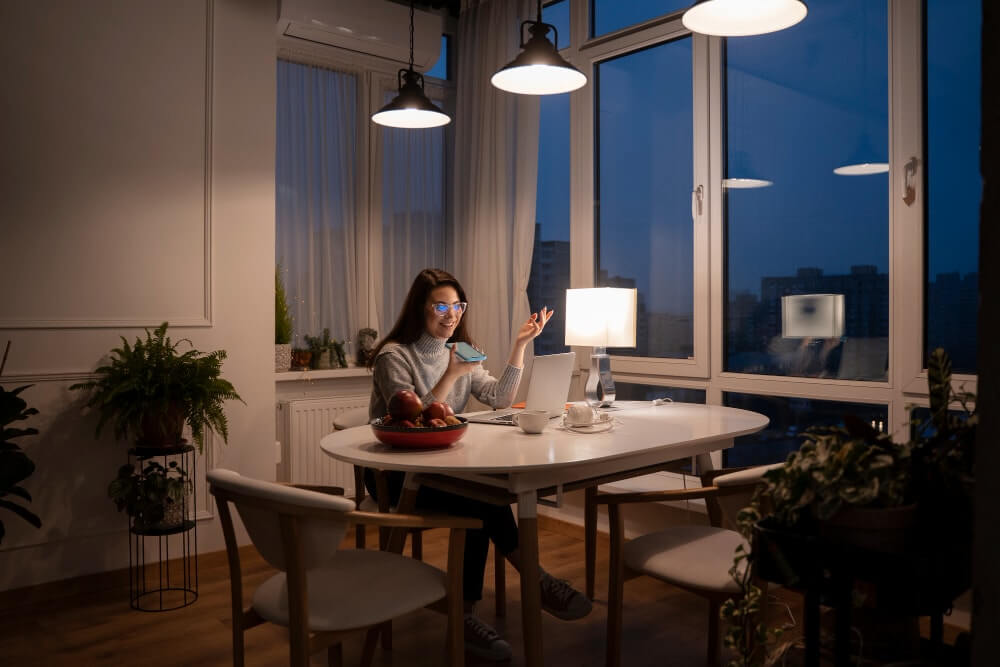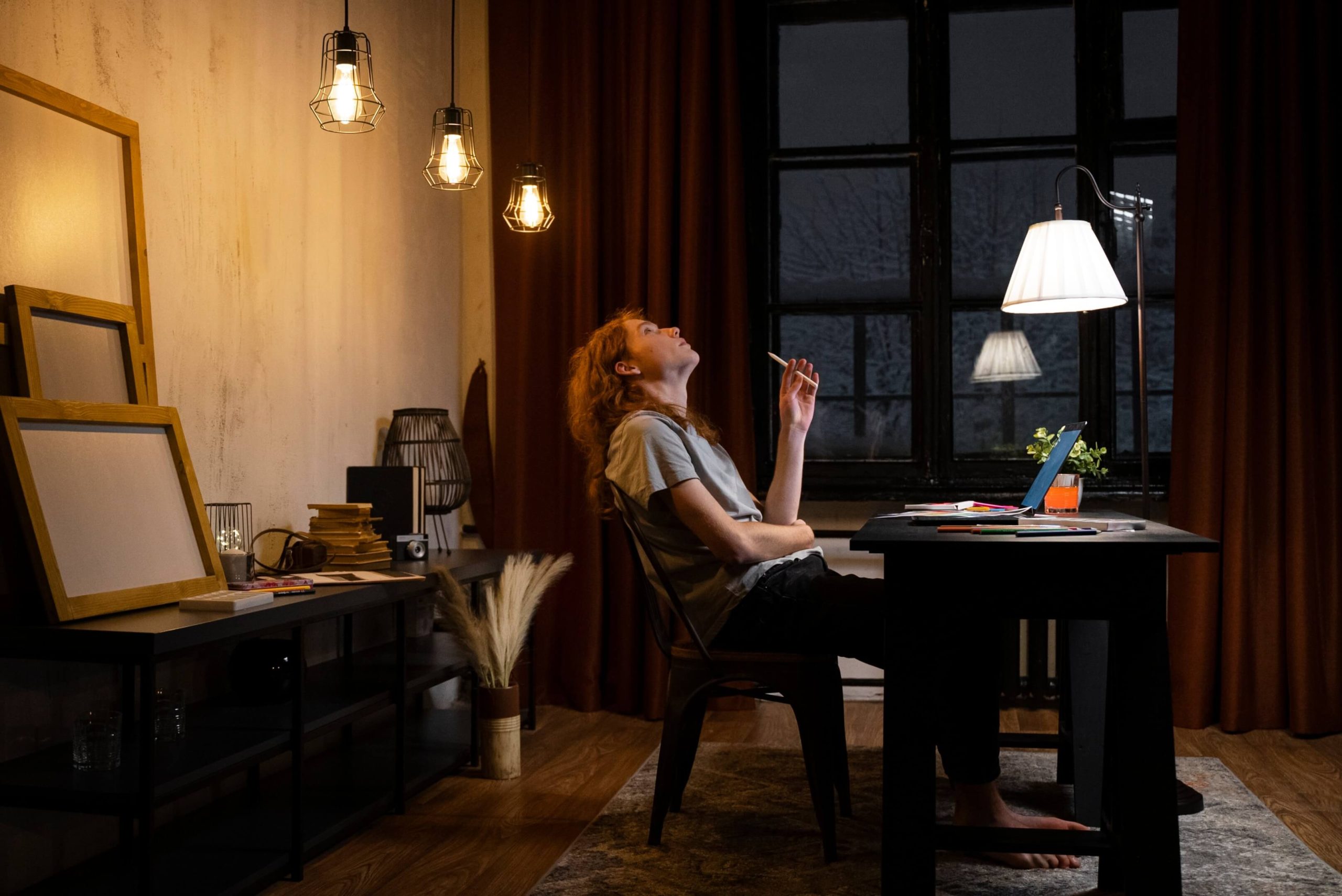Image source: Freepik
The Role of Home Lighting in Interior Design
A well-planned home lighting design does more than brighten up a house. It influences mood, comfort, and the way people interact with their environment. Thoughtful interior lighting contributes to the overall interior design, enhancing both the practical function of each room and its visual appeal. Whether it is to provide illumination for daily tasks or to highlight specific features, lighting plays a central role in creating ambiance.
For many homeowners, the process of designing a space is incomplete without a clear lighting design strategy. It is an integral part of making a house not only beautiful but also functional, ensuring that every corner delivers comfort, warmth, and style.
Natural Light as the Foundation of Interior Spaces
When possible, natural light should serve as the foundation of all interior spaces. Daylight enhances the sense of openness in a room, reduces reliance on electricity, and provides a brighter, healthier environment. Interior designers often recommend maximizing windows, skylights, and open layouts to let natural light transform the atmosphere.
Yet while natural light is invaluable, it must be balanced with artificial solutions. As the sun sets, carefully chosen lighting fixtures—from lamps to chandeliers—take over the role of completing the atmosphere, maintaining both visibility and style.

Understanding the Layers of Lighting Design
Ambient Lighting for a Welcoming Atmosphere
Ambient lighting serves as the main source of illumination in a room, setting a base layer of brightness. Ceiling-mounted fixtures, recessed lights, or large pendant lamps deliver a welcoming atmosphere that makes every space feel inviting. In communities like Crown Asia’s Novus Prime Residences, ambient light helps foster a sense of warmth and belonging, complementing the home’s architectural form.
Task Lighting for Practical Function
While ambient light creates mood, task lighting ensures practical function. Focused lighting fixtures above desks, kitchen counters, or bathroom mirrors help residents complete daily activities efficiently. Proper task lighting in kitchens makes cooking safer and more enjoyable, while study nooks benefit from adjustable desk lamps. This layer of lighting supports human needs in completing detailed activities without strain.
Accent Lighting to Highlight Specific Features
Accent lighting is used to draw attention to artwork, architectural features, or focal points in interior spaces. Track lighting, wall sconces, or concealed strip lights enhance the beauty of art or decorative elements. In a living area, accent lighting can transform an otherwise plain wall into a gallery-like display, delivering drama and character.
Beyond aesthetics, accent lighting also serves a practical function by guiding the eye through a room and helping create a sense of depth. For example, recessed lights aimed at textured walls or ceiling details can enhance their form, while subtle spotlights along shelves highlight collectibles without overwhelming the space. When thoughtfully planned, these fixtures balance style with usability, making interiors both expressive and comfortable.

Choosing the Right Lighting Fixtures
Selecting the proper lighting fixtures is both a science and an art. Chandeliers create grandeur in entryways and dining spaces, while simple lamps bring a touch of intimacy to bedrooms. Every fixture matters, as it contributes to the ambiance of the house.
Modern interior design often integrates decorative and functional pieces. For example, a pendant light may act as both illumination and art, serving as a statement piece in the space. Carefully curated fixtures deliver beauty without compromising practical function.
Creating Mood with Dimmers and Controls
The ability to adjust brightness is a key factor in creating atmosphere. Dimmers allow homeowners to control the intensity of lighting, shifting easily from focused brightness to a warm, relaxing glow. Occupancy sensors further assist in completing energy-efficient projects, ensuring that lights are only on when needed.
These technologies are not only convenient but also reduce electricity costs. A controlled approach to home lighting helps households save resources while maintaining comfort.

Lighting for Different Rooms in the House
Living Rooms and the Sense of Warmth
In living rooms, layered lighting is essential to deliver both ambiance and practical function. A combination of ambient lighting, floor lamps, and accent lighting highlights artwork and specific features. The result is a welcoming atmosphere that encourages relaxation and social interaction.
Kitchen Lighting Concepts for Cooking and Gathering
The kitchen requires thoughtful lighting design to support both cooking and family gatherings. Overhead ceiling lights provide general brightness, while under-cabinet task lights assist with food preparation. Pendant fixtures above an island not only deliver focused light but also act as decorative elements.
Bathroom Illumination for Comfort and Security
Bathroom lighting must balance clarity with relaxation. Bright task lighting at the mirror ensures accurate grooming, while soft, indirect lights create a spa-like mood. Proper illumination also provides security, helping prevent accidents in slippery areas.
Bedroom Atmosphere and Relaxation
In bedrooms, ambient lighting supported by bedside lamps and soft accents creates a restful atmosphere. Dimmable fixtures provide flexibility, allowing homeowners to shift between brighter light for reading and a warm glow for sleep preparation.

Energy Efficiency and Cost-Effective Solutions
Beyond aesthetics, energy efficiency is a major matter for homeowners. Switching to LED bulbs helps reduce electricity consumption and lowers costs without sacrificing brightness. These bulbs are long-lasting and available in varying color temperatures, from warm to brighter tones, making them versatile for any space.
In communities like Crown Asia developments, energy-conscious lighting design is often part of the broader sustainability project, delivering comfort while reducing waste.
Entrance and Exterior Lighting for a Welcoming Home
The entrance to a house sets the tone for visitors. Outdoor lamps, pathway lights, and wall sconces provide both security and a welcoming atmosphere. A thoughtfully lit exterior also enhances curb appeal, making the home stand out with warmth and elegance.
For homeowners, exterior lighting is more than just a functional element; it is a way to deliver beauty and transform the perception of a property. Well-lit exteriors ensure that families feel safe while enjoying the outdoors in the evening.

Working with an Interior Designer on Home Lighting Design
Partnering with an interior designer ensures that your home lighting design complements the overall aesthetic of the house while meeting functional needs. Professionals consider the layout, natural light sources, and the mood you want to achieve in each room.
By collaborating with experts, homeowners gain tailored solutions that balance style, efficiency, and comfort, turning lighting into an integral part of the design process rather than a last-minute addition.
Final Thoughts on Crafting the Perfect Atmosphere
Lighting is an integral part of shaping interior spaces, influencing everything from safety to mood. When chosen and applied thoughtfully, it can transform any room into a place of comfort, beauty, and purpose.
By combining ambient lighting, task lighting, and accent lighting, homeowners can achieve a balance that delivers both elegance and practical function. From chandeliers that inspire grandeur to lamps that create intimacy, every fixture plays a role in completing the design process.
For customers seeking inspiration, considering both cost and style, the world of home lighting offers endless ideas. With careful planning, every house can enjoy a welcoming atmosphere that reflects not only good design but also the values of warmth, comfort, and security.


